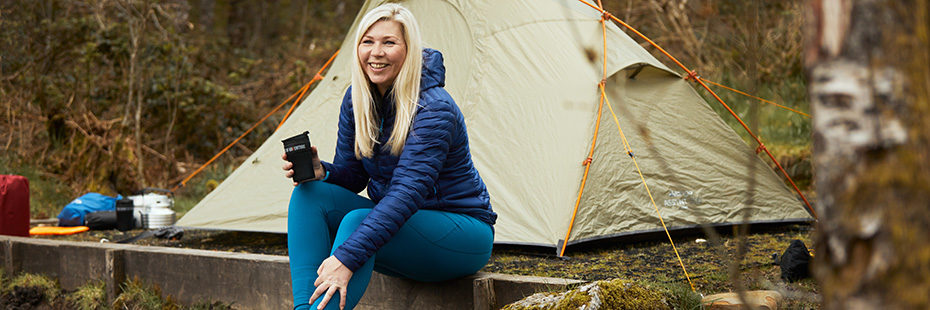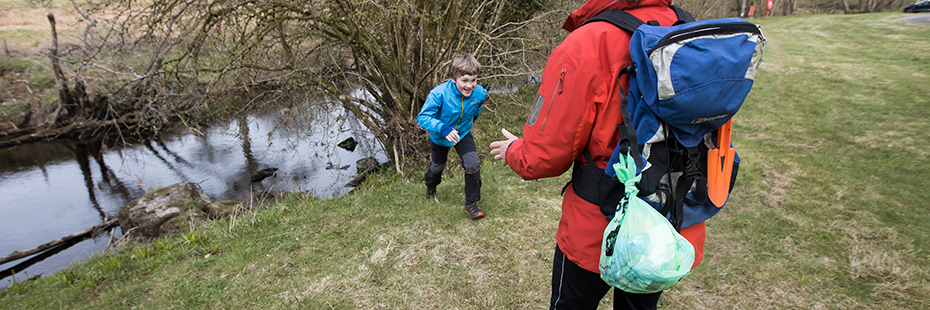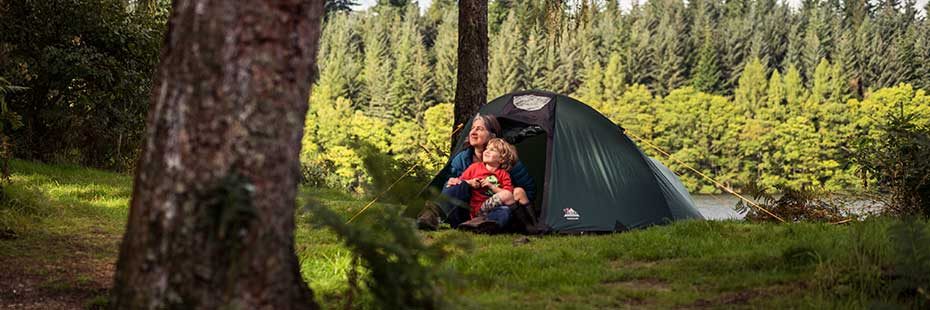
Checklist for camping in the National Park
Whether you’re coming for the first time or are a hardy camping veteran we’ve got some top tips to help you enjoy a brilliant camping trip to the National Park this summer.

Always camp responsibly
What do I need?
Everyone has different levels of comfort when it comes to camping, but there are some bits we all need to enjoy a great trip.
Regardless of where you’re planning to go you’ll still need the same basic kit.
We’ve created a handy checklist of some of the essentials and some items which might be more of a luxury, or to provide just the right level of comfort!
The essentials
The extra bits!
Anything extra needs to be carried to and from your camping spot, so bear that in mind when planning where you’ll end up. The table and chairs might seem a good idea at first, but not if you’re carrying them for miles!
Oh, and don’t forget the food! Bring items in reusable containers and remember to take whatever you bring away with you.
Remember to take home everything you bring and reuse items the next time you come camping, even if that’s not for another few months or until next year – Camping equipment isn’t just for summer and will last for a long time if you look after it.

Take your litter home
Where to go?
Ok so you’ve got some canvas for over your head and a sleeping bag to sleep in, the next step is figuring out where to go!
The National Park offers loads of opportunities for camping, from the formal campsites with lots of facilities to smaller, less formal sites with more basic facilities all the way through to wilder off the beaten track camping.
At the most popular lochs in the National Park, between March and September, you may need to book a permit camping area or campsite to stay overnight. With more people looking for staycations this year, everywhere is likely to be busier than usual so make sure you book before arriving to avoid disappointment.
Camping permit areas tend to have no facilities so you’ll need to bring everything with you (and take it home), while campsites offer a range of facilities such as toilets, water and showers.
Visit the camping section of our website to or find a campsite in the National Park.
Before you leave the house take a look at maps of the area so you know how to get there and where you can park responsibly. Be careful of using online maps to navigate though as often they can lead you down forestry tracks which are not for public access.
Where to park in the Park?
You know when you turn up to park at the supermarket and someone is parked over multiple spaces how annoying it can be! It’s really important to think through where and how you park to avoid having a knock-on impact on everyone else.
When you’re in the National Park, some places have limited parking and you won’t always be able to park in a traditional parking space. Here are a few pointers to remember so you can avoid having that knock on effect:
- never park in passing places on single track roads (the clue’s in the name, these are for vehicles to pass each other)
- Don’t block access to fields or park in front of gates
- Don’t park on grass verges, or on clearways
- Park in designated car parks whenever possible
Parking irresponsibly can have serious consequences by blocking access for emergency services, as well as for those who live and work here.
If you’re struggling to find somewhere to park responsibly, you may need to consider parking further away from your intended camping spot and walking. Before you arrive, think about where you might need to park if your first choice is unavailable.

Wild camping
When you’re here
Cooking
If you really want that traditional campfire feel, bring a fire pit so you’re having this raised off the ground and not causing any damage. You must bring your own firewood too as collecting wood (even the deadwood lying around) is damaging to the environment.
Litter
No one wants to have a rubbish time! Litter is a horrible to look at wherever you are, and its impact is even greater in the spectacular scenery of the National Park. Our top tip? Bring a rubbish bag with you and tidy your campsite as you go, don’t wait until the morning to bag litter as it may blow away.
Many camping areas are remote and don’t have bins. If this is the case, bag your litter up and take it with you until you find a bin. If bins are full, please don’t leave your bag by the side (even if others do it!) Take it home and dispose of it there as normal.
Toileting
The all-important question when camping, what to do when you need to poo? Many of our camping permit areas and wilder places in the National Park have no toilet facilities, so it helps to be prepared!
It may be the most natural thing in the world but that doesn’t mean it’s ok to ‘dump’ it anywhere. Not only does poo look and smell pretty bad, it can be harmful to people and wildlife too.
You should follow the guidance in the Scottish Outdoor Access Code and do one of two things:
- Dig a hole (you’ll already have a trowel if you’ve used our checklist above!), go 30m away from water, buildings people and animals, do your business in the hole and bury it. Bag up any toilet paper and sanitary items in your rubbish bag and dispose of this normally.
- If you can’t dig a hole, use some food waste bags to bag your waste, tie up the bag and dispose of it in a bin along with the rest of your rubbish.
You might also want to take some hand sanitiser and if you want to there are a range of things you can buy to bring with you such as special outdoor poo packs or even portable toilets.
You can find out more about poo and toilets on our dedicated poo page! Bet you never thought you’d be reading that!
And last but not least, have a great time!

